These are the drone countermeasures used by the Russian military in Ukraine, according to leaked document
- By Travis Pike
Share This Article

Effective and terrifying, the cheap, commercially available remote-controlled drones are the new Improvised Explosive Devices (IED). The Ukrainians have been using drones with great effect and the Russians have also turned them.
These little aircraft are capable of accomplishing numerous military tasks, including aerial reconnaissance, guiding artillery fire, and, most terrifying of all, dropping warheads on foreheads.
Drones equipped with various explosives have proven to be very effective weapons, especially in this new generation of trench warfare. These cheap little drones are killing personnel and even disabling varying vehicles, including armored ones.
Due to widespread use, there has been a massive increase in anti-drone measures. Sandboxx News recently obtained a translated bulletin of the Russian military, dating back to September 2024, showing five countermeasures the Russians use to combat drones.
Dedicated shotgunner
One of the most cost-effective tools for taking drones out of the sky is the shotgun. Both combatants have fielded 12-gauge shotguns for killing drones. The designated shotgunner has become a core part of the Russian defense against drones.
Russia has been outfitting its soldiers with two specific shotguns. The first is the magazine-fed VEPR-12. The VEPR-12 is a semi-auto shotgun built to resemble and handle like an AK series rifle with identical controls and design. Its magazines make reloading it much quicker than other shotguns. The gun can carry five to 20 cartridges, depending on the magazine size.
The other option is the MR-155, a more traditional sporting shotgun. Sporting shotguns excel at hitting flying objects out of the sky. Their longer barrels deliver a longer sight radius, and they tend to swing and track moving targets more easily. The MR-155 typically holds five rounds, but military models now feature expanded magazine tubes, increasing the capacity to eight rounds.
Remote-controlled shotguns
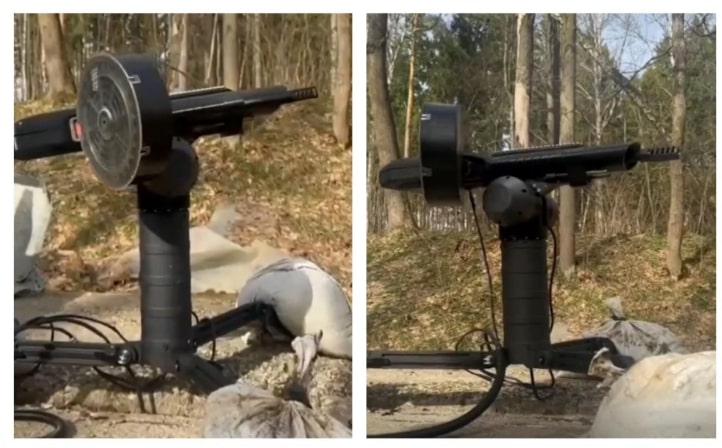
Drones are fast and drop grenades with excellent accuracy. To help counter the drone threat without exposing soldiers to it, Russia is using remote-controlled shotguns. These highly modified VEPR-12 shotguns seem to lack stocks, have much shorter barrels, and are equipped with drum magazines.
These drums increase a shotgun’s capacity to 12 and even to 20 rounds, so they don’t have to be reloaded as quickly. To defend against drones, these shotguns are mounted on tripods and on vehicles. However, they are not very effective and tend to be too slow to track the fast-moving drones.
Related: Brutal efficiency: The top 5 combat shotguns out there today
Grenade launcher adapters
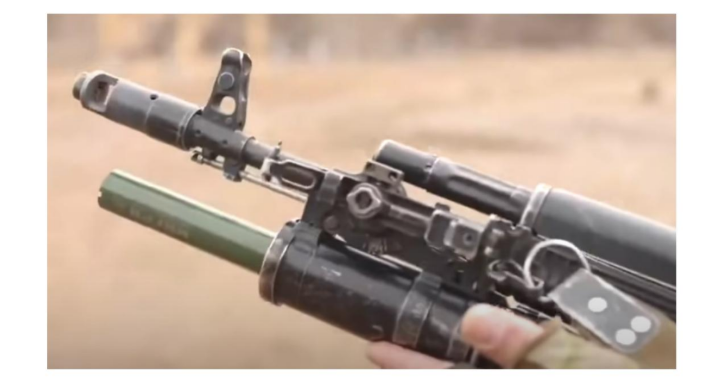
Like most modern infantry forces, the Russian military has grenade launchers that are capable of mounting to infantry rifles. The Russians use the GP-25, a 25mm grenade launcher. This tool has been in coordination with an adapter to fire 12-gauge shot shells to destroy drones. These are already issued and do not require soldiers to carry a completely different weapon system, thus making them an organic option.
The GP-25 grenade launcher must be fitted with an adapter that allows it to chamber and fire 12-gauge cartridges.
Yet, this single-shot solution has two flaws: due to its placement, it’s slow to reload and difficult to aim. Hitting moving targets can be difficult without a dedicated sighting system.
Net cartridges
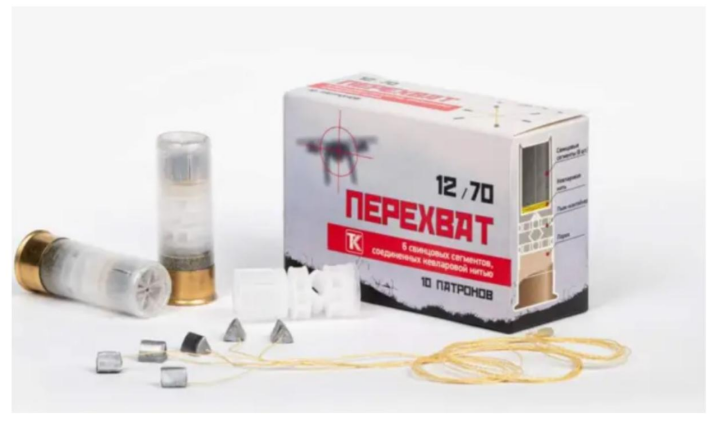
Net cartridges have existed for quite some time in the United States, but the Russians were the first to try and design a specialized drone round based on these cartridges.
Russian small arms developers have created a drone cartridge designed to help increase the likelihood of taking out a drone. This cartridge uses a net to tangle a drone’s propellers and prevent it from flying.
This drone net cartridge seems to have an effective range of 75 meters, which exceeds the normal range of buckshot. However, it’s expensive and must be hand-loaded, which makes it slow to load and unlikely to promptly fill troops’ ammo pouches.
AK-74 stacked ammo
Russian forces have also adapted buckshot ammunition to function with regular AK-74 assault rifles. They use wire and heat-wrap it around a series of pellets, they then fit in a 5.45mm case. The pellets appear to be 4.5mm ball bearings.
This cartridge appears to have an expedient field design. In one video, a Russian soldier shoots down a drone, but it’s unclear if it’s in training or combat.
It’d be extremely interested to see how the cartridges are patterned on paper – it is likely that the rifling creates a pattern on paper that isn’t consistent or predictable.
The stacked ammo design would also likely leave plastic in the bore, which might cause accuracy issues when switching back to regular ammo. So, how well it feeds or how reliable it functions in semi-auto and full-auto modes isn’t clear.
Drones aren’t going anywhere anytime soon. Electronic weapons aren’t up to snuff yet, and they haven’t been developed in larger numbers. Until they are, it seems that multi-shot weapons will be the main counter-drone option as exemplified by such Russian weapons.
Anti-drone weapons will likely be a huge part of combat going forward, and we should learn from both Russia’s and Ukraine’s successes and failures in countering them.
Feature Image: Russian soldiers fires anti-drone shotgun. (Russian military)
Read more from Sandboxx News
Related Posts
Sandboxx News Merch
-

‘Kinetic Diplomacy’ Bumper Sticker (White)
$8.00 Add to cart -

‘Sandboxx News’ Camo Trucker Hat
$29.00 Select options This product has multiple variants. The options may be chosen on the product page -

F-35 ‘Evolution’ Framed Poster
$45.00 – $111.00 Select options This product has multiple variants. The options may be chosen on the product page

Travis Pike
Travis Pike is a former Marine Machine gunner who served with 2nd Bn 2nd Marines for 5 years. He deployed in 2009 to Afghanistan and again in 2011 with the 22nd MEU(SOC) during a record-setting 11 months at sea. He’s trained with the Romanian Army, the Spanish Marines, the Emirate Marines, and the Afghan National Army. He serves as an NRA certified pistol instructor and teaches concealed carry classes.
Related to: Gear & Tech, Ukraine

The Switchblade, loitering munitions, and the new terrifying face of warfare
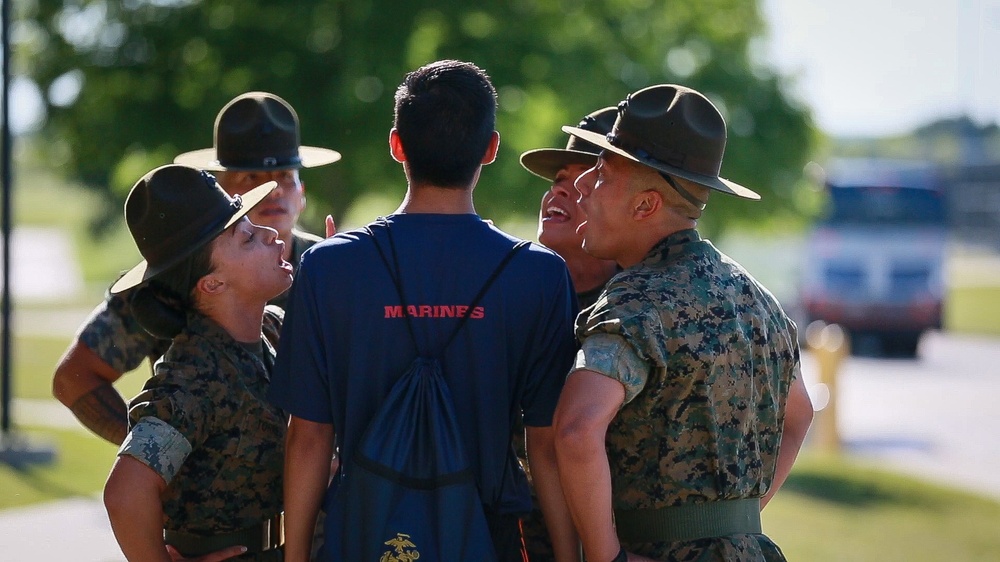
5 ways to prepare and survive the Marine Corps boot camp
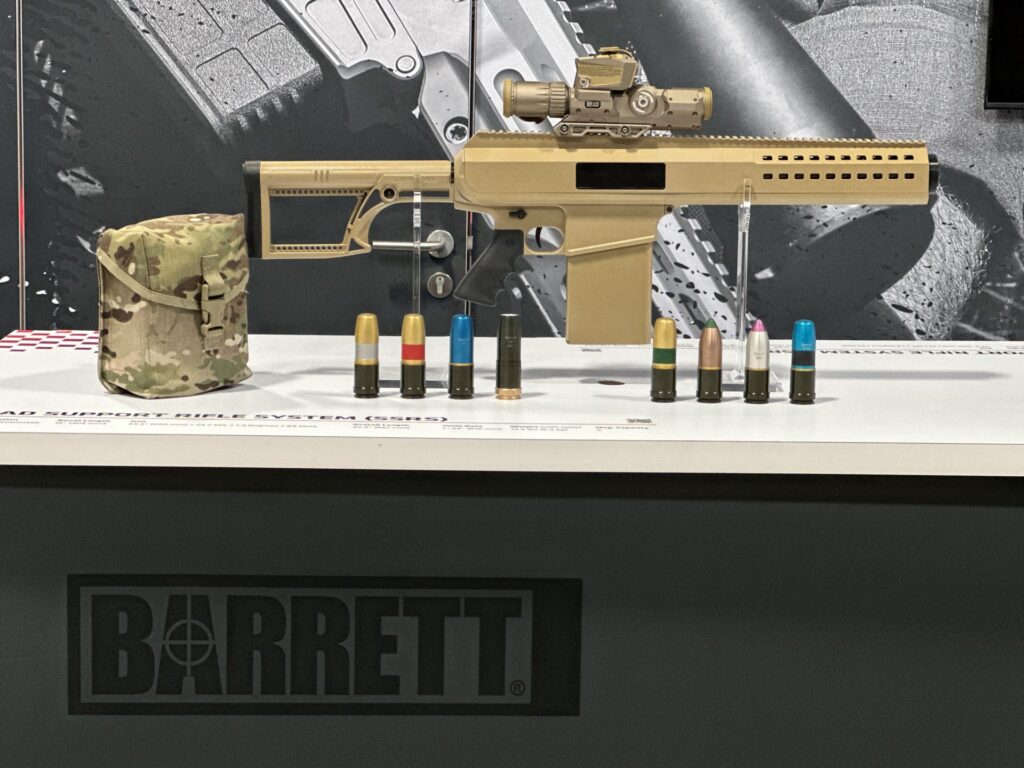
Barrett’s Squad Support Rifle System will make infantry squad deadlier
Sandboxx News
-

‘Sandboxx News’ Trucker Cap
$27.00 Select options This product has multiple variants. The options may be chosen on the product page -

‘AirPower’ Classic Hoodie
$46.00 – $48.00 Select options This product has multiple variants. The options may be chosen on the product page -

‘AirPower’ Golf Rope Hat
$31.00 Select options This product has multiple variants. The options may be chosen on the product page -

‘Sandboxx News’ Dad Hat
$27.00 Select options This product has multiple variants. The options may be chosen on the product page
